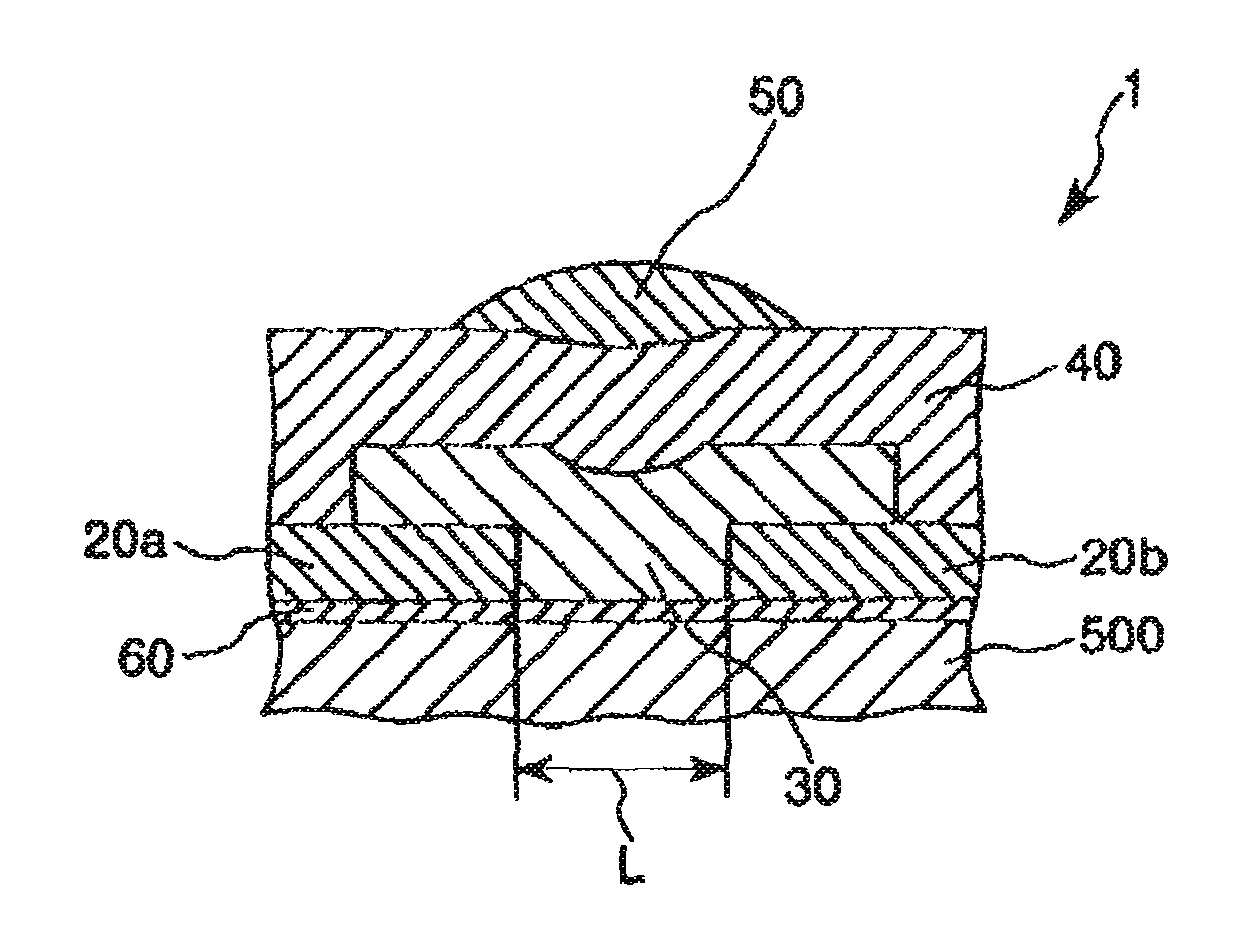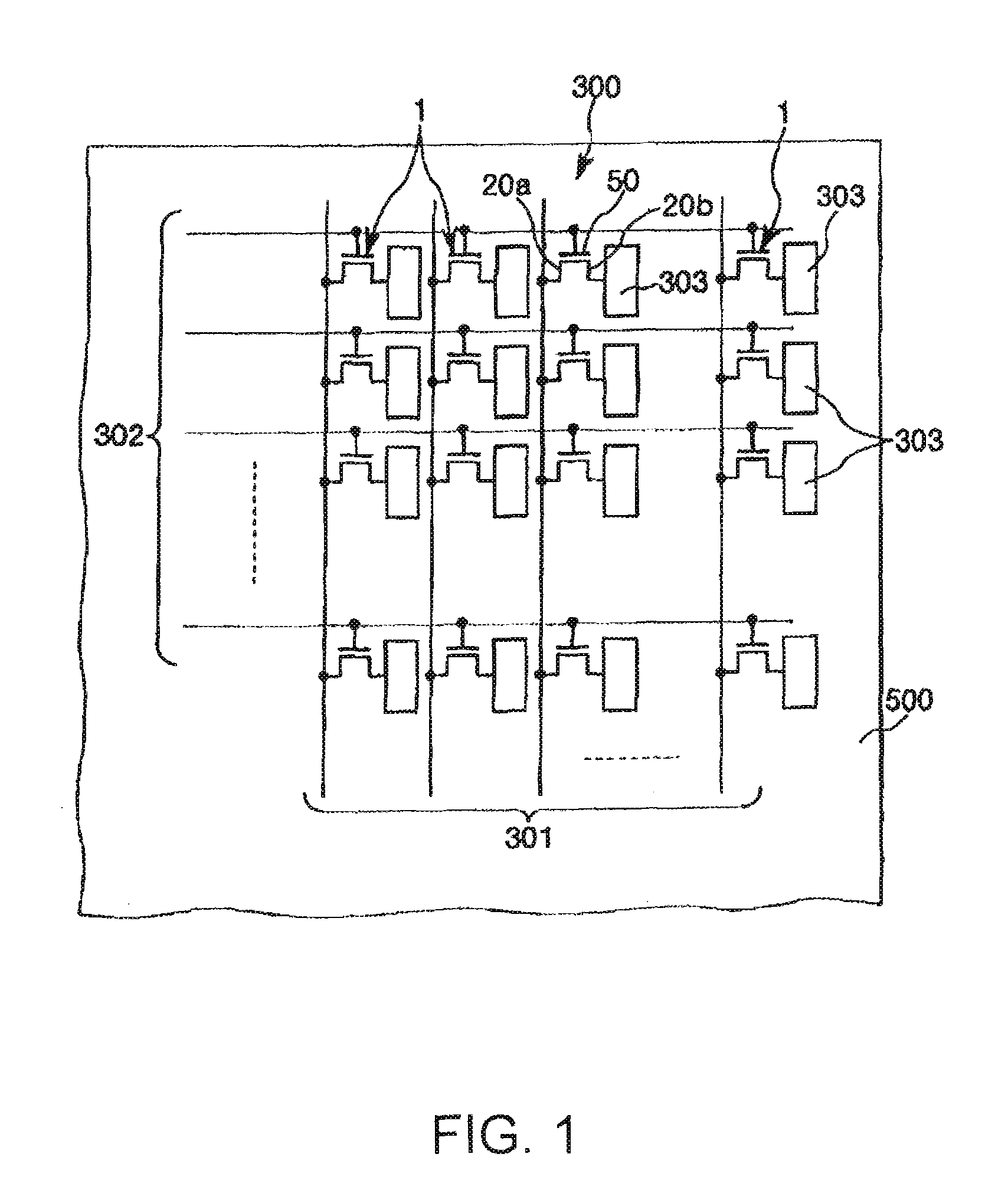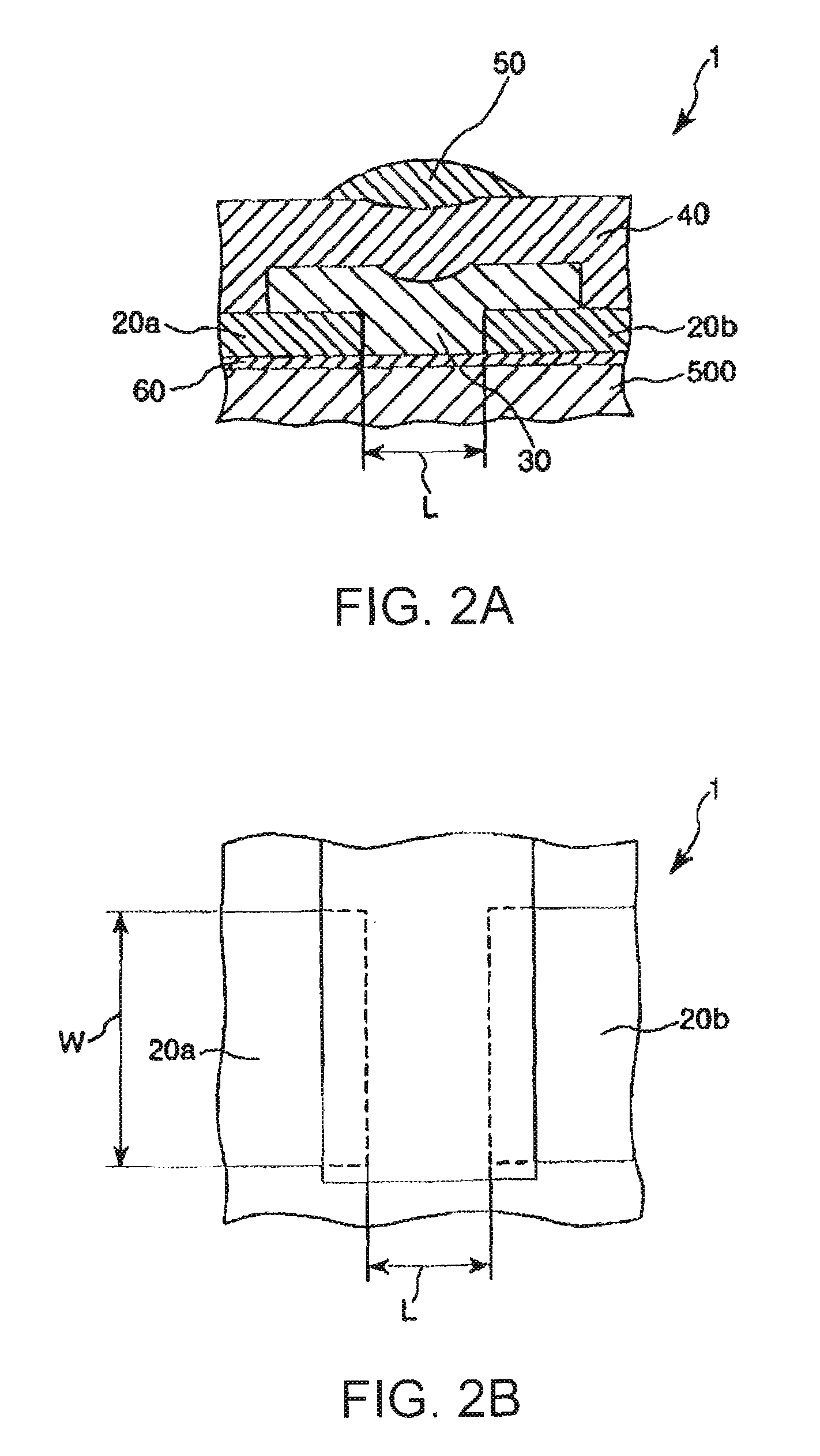Semiconductor device including an insulating layer resistant to a photolithography process, electronic device, and electronic equipment
a technology of insulating layer and semiconductor, applied in the direction of semiconductor devices, solid-state devices, thermoelectric devices, etc., can solve the problem that the thickness of thin film transistors still requires further study, and achieve excellent insulating layer performance, small vth shift, and high on-off ratio
- Summary
- Abstract
- Description
- Claims
- Application Information
AI Technical Summary
Benefits of technology
Problems solved by technology
Method used
Image
Examples
example 1
1. Preparation of the Monomers
[0164]First, the following monomer compositions A to C were prepared.
Monomer composition A;
[0165]First polymerizable monomer: 4,4′-(9-fluorenylidene)bis(2-phenyloxyethylacrylate) (from Osaka Gus Chemicals, Co., Ltd.)
[0166]Second polymerizable monomer: pentaerythritol triacrylate (from Toagosei Co., Ltd., Product name: M-305)
[0167]Structural formula I / Structural formula II=20 mol % / 80 mol %
[0168]Photo polymerization initiator: Irgacure907 (from Ciba Specialty Chemicals K.K.)
[0169](Structural Formula I+Structural Formula II) / photo polymerization initiator=100 wt % / 4 wt %
[0170]Structural Formula I: bisphenol fluorene diglycidyl ether (from Osaka Gus Chemicals, Co., Ltd.)
[0171]Structural Formula II: dipentaerythritol hexaacrylate (from Shin-Nakamura Chemical Co., Ltd., Product name: NK Ester A-DPH)
[0172]Structural formula I / Structural formula II=50 mol % / 50 mol %
[0173]Photo polymerization initiator: Irgacure184 (from Ciba Specialty Che...
example 11
[0181]1) First, 150 μm thickness of SUS 304 substrate was prepared. Then the SUS 304 substrate was washed with water and dried.
[0182]2) A solution of the monomer composition A of which solvent is carbitol acetate and solid content was prepared to be 10 wt / vol % was applied on the substrate by spin-coating (at 1500 rpm), and then 7 mW / cm2 intensity of ultraviolet was irradiated from a direction perpendicular to the substrate for 120 seconds. Then the substrate was heated at 100 degrees Celsius for 10 minutes to effect polymerization, completing the reaction. This process provided a lower layer (second insulating layer) having an average thickness of 3 μm.
[0183]3) A gold thin film was formed on the lower layer by vapor deposition, and next a resist layer was formed thereon by photolithography. Then the gold thin film was etched by using the resist layer as a mask.
[0184]This process provided a source electrode and a drain electrode having an average thickness of 100 nm. In addition, a ...
example 12
[0193]Each thin film transistor was manufactured in the same manner as Example 11 except for using the monomer composition B as substitute for the monomer composition A.
PUM
| Property | Measurement | Unit |
|---|---|---|
| thickness | aaaaa | aaaaa |
| mol % | aaaaa | aaaaa |
| thickness | aaaaa | aaaaa |
Abstract
Description
Claims
Application Information
 Login to View More
Login to View More - R&D
- Intellectual Property
- Life Sciences
- Materials
- Tech Scout
- Unparalleled Data Quality
- Higher Quality Content
- 60% Fewer Hallucinations
Browse by: Latest US Patents, China's latest patents, Technical Efficacy Thesaurus, Application Domain, Technology Topic, Popular Technical Reports.
© 2025 PatSnap. All rights reserved.Legal|Privacy policy|Modern Slavery Act Transparency Statement|Sitemap|About US| Contact US: help@patsnap.com



